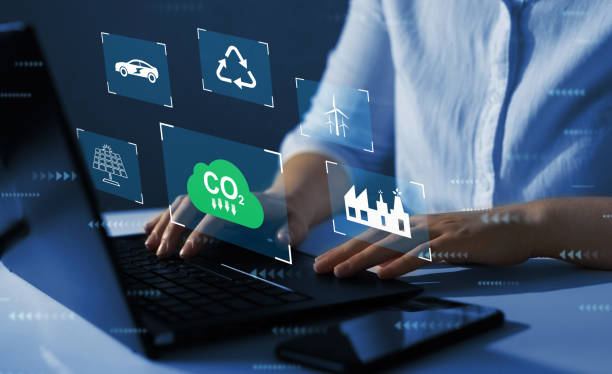
Introduction
The concept of a green economy represents a transformative shift in how economies operate, emphasizing sustainability and environmental stewardship. As concerns about climate change, resource depletion, and environmental degradation intensify, the green economy seeks to reconcile economic growth with ecological preservation. This essay explores the significance of investing in sustainable technologies as a cornerstone of the green economy, examining how such investments contribute to long-term growth and resilience. It delves into the benefits of green technologies, the challenges and opportunities they present, and the broader implications for businesses, governments, and society.
Understanding the Green Economy
Definition and Principles: The green economy is defined by its focus on promoting economic development while ensuring environmental protection and social equity. It emphasizes reducing carbon emissions, conserving natural resources, and fostering innovation in sustainable practices. Key principles include energy efficiency, waste reduction, and the use of renewable resources.
Historical Context: The idea of a green economy has evolved over decades, influenced by growing awareness of environmental issues and the limits of traditional economic models. Early environmental movements laid the groundwork for integrating sustainability into economic planning, leading to the rise of green technologies and practices in recent years.
Key Components: Central to the green economy are sustainable technologies, which include innovations in renewable energy, energy efficiency, waste management, and sustainable agriculture. These technologies aim to minimize environmental impact while supporting economic growth and development.
Investing in Sustainable Technologies
Renewable Energy: Investment in renewable energy sources such as solar, wind, and hydropower is a cornerstone of the green economy. These technologies provide cleaner alternatives to fossil fuels, reducing greenhouse gas emissions and dependence on non-renewable resources. The growth of renewable energy investments has been driven by advances in technology, decreasing costs, and supportive policies.
Energy Efficiency: Enhancing energy efficiency involves improving the performance of energy use in buildings, transportation, and industrial processes. Technologies such as LED lighting, smart grids, and energy-efficient appliances contribute to reduced energy consumption and lower operational costs. Investments in energy efficiency offer significant economic and environmental benefits.
Waste Management and Recycling: Effective waste management and recycling technologies play a crucial role in reducing landfill use and conserving resources. Innovations in waste-to-energy technologies, advanced recycling processes, and circular economy practices aim to minimize waste and maximize resource recovery.
Sustainable Agriculture: Sustainable agriculture practices focus on reducing environmental impact while maintaining productivity. Technologies such as precision farming, vertical farming, and organic practices contribute to soil health, water conservation, and reduced use of harmful chemicals.
Benefits of Investing in Green Technologies
Economic Growth and Job Creation: Investing in green technologies fosters economic growth by creating new industries and job opportunities. The renewable energy sector, for example, has generated numerous jobs in manufacturing, installation, and maintenance. Green technologies also stimulate innovation and competitiveness, driving economic development in emerging sectors.
Environmental Protection: Green technologies contribute to environmental protection by reducing pollution, conserving natural resources, and mitigating climate change. Renewable energy sources decrease carbon emissions, while waste management technologies minimize environmental impact. These technologies support the transition to a more sustainable and resilient ecosystem.
Energy Independence: Investments in renewable energy and energy efficiency enhance energy security and reduce dependence on imported fossil fuels. By developing domestic energy sources, countries can achieve greater energy independence and stabilize energy prices, contributing to national security and economic stability.
Health and Well-Being: Green technologies improve public health by reducing pollution and promoting cleaner living environments. For example, energy-efficient buildings and reduced air pollution contribute to better respiratory health. Sustainable agriculture practices also lead to healthier food options and reduced exposure to harmful chemicals.
Challenges and Opportunities
High Initial Costs: One of the primary challenges associated with green technologies is the high initial investment required. While many green technologies offer long-term savings and benefits, the upfront costs can be a barrier for businesses and individuals. Financial incentives, subsidies, and innovative financing models are crucial for overcoming this challenge.
Technological Development and Innovation: The rapid pace of technological development presents both opportunities and challenges. Continuous innovation is necessary to improve the efficiency and affordability of green technologies. However, the fast-changing landscape can make it difficult for investors and policymakers to keep up with the latest advancements and assess their potential impact.
Policy and Regulatory Frameworks: Effective policies and regulations are essential for promoting the adoption of green technologies. Governments play a critical role in creating supportive frameworks, such as tax incentives, subsidies, and emissions regulations. However, inconsistent policies and regulatory barriers can hinder the growth of green technologies and their integration into mainstream markets.
Public Awareness and Acceptance: Public awareness and acceptance of green technologies are crucial for their widespread adoption. Educating consumers and businesses about the benefits of sustainable technologies and addressing misconceptions can enhance acceptance and drive demand. Public support is also essential for influencing policy decisions and encouraging investment.
Case Studies
Solar Energy Innovations: The growth of the solar energy sector exemplifies the success of investing in green technologies. Advances in solar panel efficiency, reduced costs, and large-scale solar farms have made solar energy a viable and widely adopted alternative to fossil fuels. Countries like Germany and China have led the way in solar energy investment, demonstrating its potential for economic growth and environmental impact.
Waste-to-Energy Technologies: Waste-to-energy technologies offer a sustainable solution for managing waste and generating energy. Facilities that convert waste into electricity or heat provide dual benefits: reducing landfill use and producing renewable energy. Cities like San Francisco and Stockholm have implemented successful waste-to-energy programs, showcasing their effectiveness in waste management and energy production.
Sustainable Agriculture Practices: Innovations in sustainable agriculture, such as precision farming and vertical farming, have transformed food production and resource management. Companies like AeroFarms and The Climate Corporation are leading the way in developing technologies that optimize resource use, increase crop yields, and reduce environmental impact.
Policy and Future Directions
Supportive Policies and Incentives: Governments and policymakers must continue to support green technologies through favorable policies and incentives. This includes implementing subsidies, tax credits, and grants for green technology projects, as well as establishing regulatory frameworks that encourage sustainable practices.
Investment in Research and Development: Ongoing investment in research and development is essential for advancing green technologies and addressing current limitations. Collaborative efforts between governments, businesses, and research institutions can drive innovation and accelerate the development of new solutions.
Global Collaboration and Knowledge Sharing: Addressing global environmental challenges requires international cooperation and knowledge sharing. Collaborative initiatives, such as global climate agreements and technology exchange programs, can facilitate the adoption of green technologies and promote sustainable development on a global scale.
Consumer Engagement and Education: Engaging consumers and raising awareness about the benefits of green technologies can drive demand and support their adoption. Educational programs, public campaigns, and incentives can help consumers make informed choices and contribute to a more sustainable future.

Conclusion
The green economy represents a transformative shift toward sustainable development, driven by investments in green technologies. These technologies offer significant benefits, including economic growth, environmental protection, and improved public health. However, challenges such as high initial costs, technological development, and policy barriers must be addressed to fully realize their potential.
Investing in sustainable technologies is crucial for long-term growth and resilience, supporting the transition to a more sustainable and equitable global economy. By fostering innovation, implementing supportive policies, and engaging stakeholders, we can navigate the path toward a greener future and ensure that economic development is aligned with environmental stewardship. The continued advancement of green technologies will play a pivotal role in shaping the future of the global economy and addressing the pressing environmental challenges of our time.











